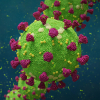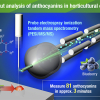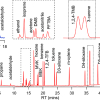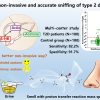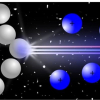
The new approach, called individual ion mass spectrometry (I2MS) can determine the exact mass of a huge range of intact proteins. It analyses the mass of each and every molecule on an individual basis. Details were published in Nature Methods. The researchers show that their method, which uses the commercially available Orbitrap mass spectrometer system, can be used on super complex mixtures of intact proteins, and even whole virus particles carrying diverse cargo within them. This power and versatility will enable a new wave of molecular precision to be brought to diverse problems in vaccinology, virology, neurodegenerative plaques and disease biology in general.
“Quickly characterising the masses of viruses and their infectious cargo over time may help scientists understand mutations that are occurring”, said Neil L. Kelleher, who led the research. “Whether directly characterising different strains of viruses or profiling different vaccine formulations, our new technology now can be deployed directly on these protein-containing samples to pursue the most urgent challenges of the day”, he said.
The technology will help scientists further understand the composition of the exterior of a virus (called the capsid) and the infectious cargo held within the capsid, Kelleher said. Because the researchers can analyse a handful of single virus particles at a time, they can extract information about precise variations in each particle.
“Many research groups are studying the use of viral capsids filled with cargo as a means to deliver life-saving drugs to patients”, said Jared O. Kafader, the study’s first author. “Our technology provides a practical way to determine if the cargo contains the correct drug or to find out what is actually within each virus particle.”
A related study by the Kelleher group, published recently in the Journal of Proteome Research, extends the use of I2MS to the fragmentation of intact species. By fragmenting intact proteins, important information can be obtained about where modifications or mutations on the protein can be identified, the researchers said. These modifications have implications for understanding how proteins change or mutate in cancer patients.





